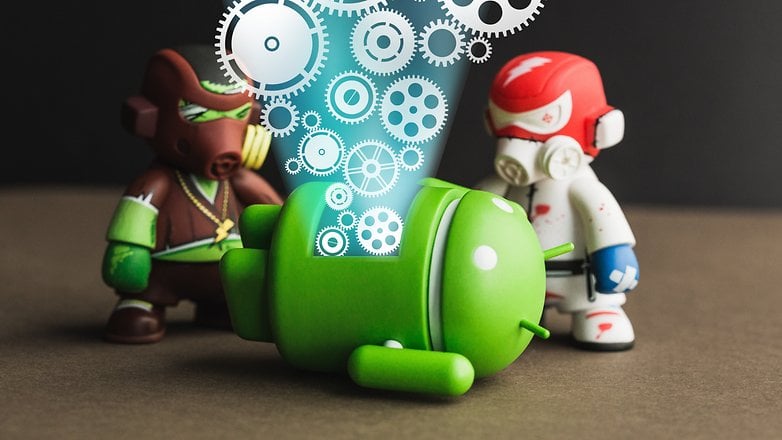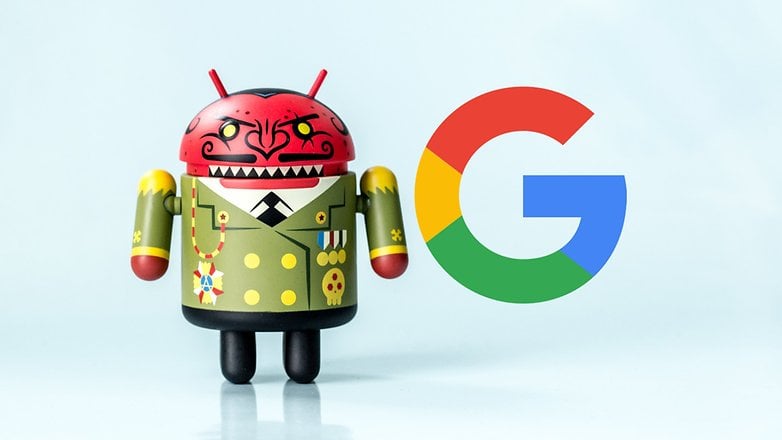Speed up your phone by disabling these so-called 'features'

So you just got a new smartphone and in a blink, you've already installed all your favorite apps and services. But are you sure you've configured the device correctly? Let's have a look!
The items in this article shouldn't be treated as absolute rules that every user must follow. You can choose to disable these features or not, depending on your habits and preferences. That’s the beauty of Android: the choice is yours.
Jump to:
Optimization and fluidity
We all want an ultra-fast smartphone that loads applications quickly and offers maximum battery life. Some of you will have an advantage over others (if you have a powerful smartphone), while others will have more difficulties. In both cases, it’s recommended that you follow a few simple steps to avoid basic issues.
1. Automatic brightness and other features that affect battery life
Many manufacturers offer an automatic or 'adaptive' brightness system. The smartphone detects the ambient light level and adapts its display so it's comfortable to read. It's a laudable idea, but the execution is disappointing most of the time, since the luminosity threshold can be higher than you need. Brightness means energy, and consumption will increase - your battery is ultimately paying for it. In short, turn off the automatic brightness and calibrate it yourself. You’ll get more battery life out of it.
The screen is the element that affects your smartphone’s autonomy the most, so you have nothing to lose by taking a look at your screen options to see if something needs to be changed. This, of course, depends on your use and habits, but in most cases it’s pointless to keep the screen on for more than a minute.

2. Useless and cumbersome bloatware
Your smartphone likely contains at least one app that you don't use or doesn’t interest you. Whether it’s Google service (for example Duo), an app pre-installed by your operator, an app from the manufacturer, or a sponsored app. These applications not only take up space, but may also run in the background. In many cases, they can be deleted (and you’re better off deleting them).
Let’s say it once and for all: as a rule, Google apps can’t be deleted (at least not without some serious work). Some apps pre-installed by manufacturers can’t be uninstalled either. So what to do? You can simply disable them: not only will they take up less space in the system, but they also will no longer bother you. To do this, go to the Settings, find the list of apps and search to find the one you’re looking for.
3. Animations and transitions
If your smartphone isn’t very powerful, you can try to make it run more smoothly. There’s one little trick that can help you on a daily basis: disabling transitions and animations. To be more specific, these are the effects you see when you switch from one screen or app to another: they can be pretty, but they’re unnecessary. If you disable them, transitions will be faster.
All you have to do is simply enable developer options. Once you’ve done this, you’ll find the Developer options menu and ‘Window animation scale’, ‘Transition animation scale’, and ‘Animation duration scale’. Once you’ve done this, you’ll just have to reduce it (for example to 0.5) or deactivate it.
User experience
The experience you have with your smartphone depends on many elements, some of which can be quite subjective. Some things can be a pain on a daily basis, so perhaps some of the following points will be useful to you.
4. Vibrations and sounds
Vibrations and sounds are intended to mimic the response of a physical button, but in practice, they’re usually quite irritating. Even worse, they’ll impact your device’s autonomy. This is why you should ask yourself if this feature really is of value to you. If this isn’t the case, you should deactivate it:
To disable sounds and vibrations:
- Go to Settings > Sound & notifications
- Once you’re in this menu, you can disable everything: Dial pad sounds, Screen locking sounds, Charging sounds, Touch sounds, Vibrate on touch, etc.
Please note: if the smartphone is being used by an older person who doesn’t have a great tense of touch, it’s recommended that you leave the vibration on, so that they can better feel the screen.
Privacy and confidentiality
User privacy has made many headlines in the tech world this year. The Cambridge Analytica case has catapulted Facebook to the forefront (due to criticism of its business model and the exposure of some of its practices), and other big names in technology have quickly followed up by providing clearer terms and conditions for user privacy.
5. Delete Facebook
The Facebook app comes preinstalled on many phones, but it's a notorious hogger of data (your personal data sure, but also your cellular data) and smartphone resources. Uninstalling it will speed up your smartphone, and improve your device's performance. Scientists even suggest that avoiding social media will make you feel happier and less lonely.

Even if you want to use Facebook on your smartphone, there are more efficient ways of doing it than the official Facebook app. Try these best Facebook alternatives for Android.
6. Personalization for advertisements
Of course, Google uses your private data to get to know you better, which allows it to target you with ads. By accepting Google on your phone, you accept the rules of the game: it will get information about you through its various services and apps. You can’t do much about this (unless you boycott Google), but you can decide whether apps can use your ad ID or not. If you decide to disable this option, Google won’t be able to offer you targeted ads (but they’ll continue to send you ads anyway).
To do this, simply go to Settings and search in the Google menu. You’ll then find ‘Ads’, and there you’ll be able to set which apps may use your ad ID to create profiles and run custom ads. Of course, if you want to see targeted ads it’s better to leave this option enabled, but you won’t prevent Google from getting information about you.

Do you disable these features when you get a new smartphone? Let us know what you think in the comments!




















flash lineageOS. Google that or search on XDA De slopers website.
If smartphone manufacturers want to provide users with additional features, all they need to do is pre install "Tasker" with root access enabled on their smartphones only for it. Infinite possibilities, for this carries infinite potential of enhancement in usability, zero annoyance. That's wisdom.
Thanks, nice article. But for Email (which is TOTAL f***), and some other useless default apps can't be disabled, how do you get rid of them? the only option is force stop...
Camila Rinaldi... ♥♥♥♥♥
Hi Thanks for the article this information helped me a lot
I can understand and appreciate that other users than me like the "innovation" that OEMs or Google itself bring to new models, so it's a personal preference thing: but I figured out what I like on Android G and replace the launcher, keyboard and usually all preinstalled apps with personal preferences, and set them up consistently year after year and model across model (currently a phone and upstairs and downstairs tablets). There's just too much learning curve to bother with, regardless of minor "improvements". I much agree with substituting good websites for the constant alerting and updating nuisance and battery drain of locally installed social media and news media apps. Many internet-based services are best out of sight and mind in the cloud, taking care of themselves instead of me doing it.
I'll throw in that one of the things I remove is, using the Recovery Mode: Cache Partition Wipe, the giant amount of useless temporary file kludge from the factory install and any version updating on new devices: yes, a brand new device will run faster and better with a rebuilt system cache following first activation, and every few months thereafter.
Awesome information.
One thing AdGuard blocks all of this and, if you use Tor or Orbot with it you have a proxy. AdGuard removes all ads, all malaware/spyware, all cookies, all removes trackers. One device is about $10.00 for a lifetime and 4 device is about $200.00 for lifetime. I have nothing to do with AdGuard I just be using it for about two or three years now.
great tips to increase battery life BTW
Man, vibration and sounds as feedback should be disabled by default. It is annoying...
If I don't use it's either uninstalled or disabled. The older versions of Android didn't allow disabling apps. Does it save battery? Yes it does. It as well it frees up memory being used, plus reduces background data, that is being wasted.
I don't buy high-end phone so I always disable animations and transitions on my phone.
Usually even with auto brightness you can lower the base level. Also disabling an app doesn't clear space in the system partition and only a very small portion on the data partition if the app never had been used
how much energy do you save by doing all this configurations on to your smartphone? how many added time do I get from my battery in a single day for this?
Little known fact (at least to the author of the above article): On Samsung phones if you have automatic brightness on and direct sunlight hits the screen (Or any very bright light) the screen brightness will jump about 35% higher than is possible to set manually. You can easily read the screen with the sun shining directly on it. If you turn automatic brightness off this won't happen.
At first glance, for those who first put their hands on a smartphone, everything will be very difficult and incomprehensible. If it is easy for a home appliance to understand how it works, often with just one button for on-off, smartphones are a bit more complicated.
Those who have a bit of experience (!), But I met people who were afraid to use these phones. I explained them in very simple steps they had to do, then I noticed I am glad to use it.
Welcome to the new and great Universe!
Amazing...Thank you for sharing this information
Much of this relates to preinstallations and Google apps, which different users will have big differences in using. I've kept an old Android J tablet with 8gb storage around as a spare, and regained a lot of space by removing (among other things) the main Google search app, Google Maps, GMail and Google translate and simply using Chrome browser's Google search box and bookmarking Google's excellent web pages for the same services, as needed. This also saves the nuisance of downloading the constant updates to those apps, all implemented up in the cloud. (As far as I've seen, Google's new lightweight Go "apps" seem little more than homescreen bookmarks to Chrome web pages shown in System WebView.) As a general replacement for resource and storage hungry Play Store apps with their constant update nagging, it's worth checking for browser page equivalents that might do just as well.
Thanx for this info, sir. I thought the device would stop working if i killed all the Google junk. The constant updating is a pain in a lobe somewhere. Tried turning auto update off, but the phone bugs you 'bout the updates needed and that's it's turned off and can't install 'em. My trusted and beloved old school Galaxy s4 and I do well together, but we don't care for the constant adjustments and reconfigures and other things better expressed using bad English. Thanx again. L
Nice article. The number 5 has always been my major concerned. Those dial pad touch tone, screen Lock tone and the tap sounds can be so annoying especially when you don't want the person next to you know you are busy chatting when Program is going on in a church/social gathering. As for the touch vibration, it makes the typing more sweet and stressed free...